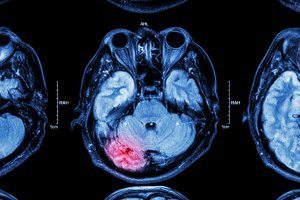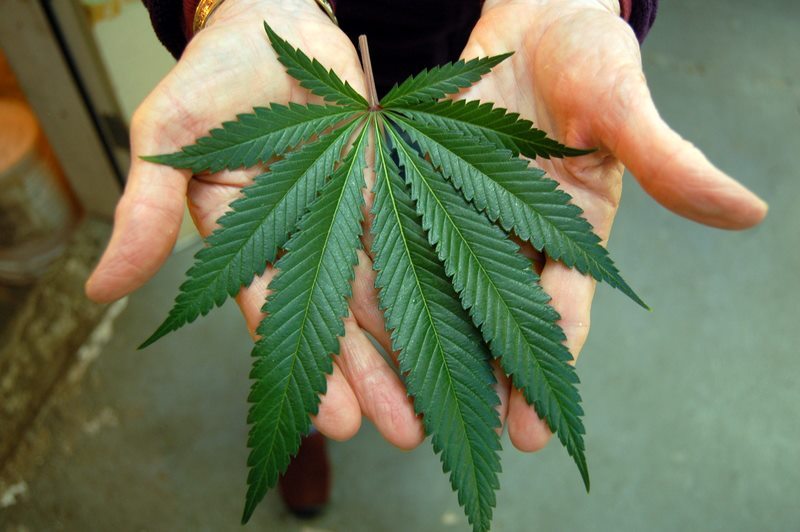K2 or Spice, and it has a bunch of other names, is a dangerous synthetic marijuana being developed in laboratories world-wide and sold, primarily to teens, as cheaper and possibly stronger than real marijuana. Typically these chemicals are sprayed onto some plant material to make it look like real marijuana, but real marijuana actually has health benefits. The problem is that these chemicals can be lethal, whereas marijuana can not.
Cannabinoid Receptors
The body is a remarkable, and complex, system. Most people don’t think too deeply about what makes it tick. We, doctors, do. Have you ever given much thought to why Cannabis does to us what it does? It’s not just because the chemicals enter our bodies and produce their reaction; that’s far too crude a level of activity to produce the beneficial effects we know, whether anti-anxiety or anti-inflammatory. To deliver that sort of specific effect, the chemicals in Cannabis, called Cannabinoids, interact with already existing receptors on our cells. What, you say? There are Cannabinoid receptors on our cells just waiting for weed smoke to trigger them? Well, yes, sort of. Those receptors are part of a built-in signaling pathway that uses our own endogenous (built-in) Cannabinoids. Yes, we have built-in weed chemicals in our bodies that are part of our normal function. Mind blown yet?
These Cannabinoids and their receptors are called The Endocannabinoid System. There are 2 known receptor types, which are CB1R and CB2R. As a general rule, the CB1R receptors are located in the brain and other nervous tissue, and the CB2R receptors are located on immune systems cells. Undoubtedly, this is a gross simplification of the real system, as we know that different Cannabinoids have different effects on these cells, implying that there are likely more receptors yet to be identified and/or that the known receptors have different responses to various Cannabinoids, either by the strength of the binding/signaling, or by the specific reaction of the receptor to differing Cannabinoids.
There’s no question this is complicated stuff. Hopefully I’m not losing you.
This is where the whole synthetic Marijuana thing comes in. Synthetic, in this case, just means it was made in a lab, rather than being extracted from the Cannabis plant. Examples of synthetic marijuana include Marinol, Epidiolex, and Sativex, which are products of pharmaceutical companies and are in use medically, or soon will be. So, we can infer that not all synthetic Cannabinoids are dangerous.

Synthetic Cannabinoids vs. Medical Marijuana
However, there are many types of synthetic marijuana that are dangerous. Part of the problem is that there’s no way to know what’s really in K2 and similar products. The synthetic Cannabinoids in use are always changing to stay ahead of the laws outlawing them. The dosing is highly variable as well. Ultimately, however, the biology of these Cannabinoids themselves are at the root of the problem. These synthetic Cannabinoids have been noted to cause tachycardia, hypertension, nausea, vomiting, convulsions, agitation, hallucinations and psychosis. In rare cases, users have committed suicide following onset of severe psychosis and/or panic attack. Deaths have also occurred from severe muscle breakdown, cessation of breathing, and kidney failure. In three cases, teens have had heart attacks 3-7 days after using K2.
Yet, contrary to some of the outdated myths about marijuana, none of these awful things seem to occur with actual marijuana. It appears that many of these synthetic Cannabinoids are more potent than naturally occurring THC. They may bind to the CBR more tightly or activate it more strongly. They also may act in other ways that natural Cannabinoids do not. Some appear to bind to Serotonin receptors, for example, where natural Cannabinoids don’t. Serotonin Syndrome, associated as a rare adverse outcome with other pharmaceuticals, produces many of the symptoms exhibited by K2.

The Entourage Effect
Most interesting, however, is the idea that marijuana contains many Cannabinoids, not just the THC and Cannabidiol (CBD) that often discussed in the press. Marijuana contains about 80 Cannabinoids, and many other compounds called Terpenoids. It is felt that some of these other Cannabinoids work to offset the negative side effects that are produced by single Cannabinoids. This is called the Entourage Effect. Essentially this theory states that as a group of compounds, the Cannabinoids in marijuana work better than any one alone. Extract of marijuana (or just marijuana) is more effective than any single agent. Terpenoids may also contribute to modulating the effects of Cannabinoids.
Synthetic marijuana does not contain any of these other Cannabinoids (except the newer pharmaceutical ones that may blend THC with CBD). Marinol, for example is pure THC. It is not well tolerated by patients. While intended to combat nausea from chemotherapy, and anorexia, it produces a potent “high” that is described as panic-inducing and unpleasant. It’s also not as effective for the intended use as other medications. Marinol has all but ceased being used. Nonetheless, Marinol has not produced the severe reactions that K2 has. This would imply that beyond being an unmitigated THC analog, the agents in K2 have the other effects we mentioned above.
It is unclear to me why K2 has become so popular when actual Cannabis, although largely still illegal for recreation, is so widely available. Perhaps Cannabis isn’t as available to teens in certain locations, or perhaps Cannabis is, in fact, just more expensive. However, it must be understood that synthetic Cannabinoids are different from Cannabis, and in many cases, quite dangerous.
If you’re living with a serious medical condition, medical Cannabis may be able to help provide additional relief in conjunction with traditional treatment. To talk to your doctor about medical marijuana and whether it could be right for your condition, call Dr. Tishler at (617) 477-8886.

